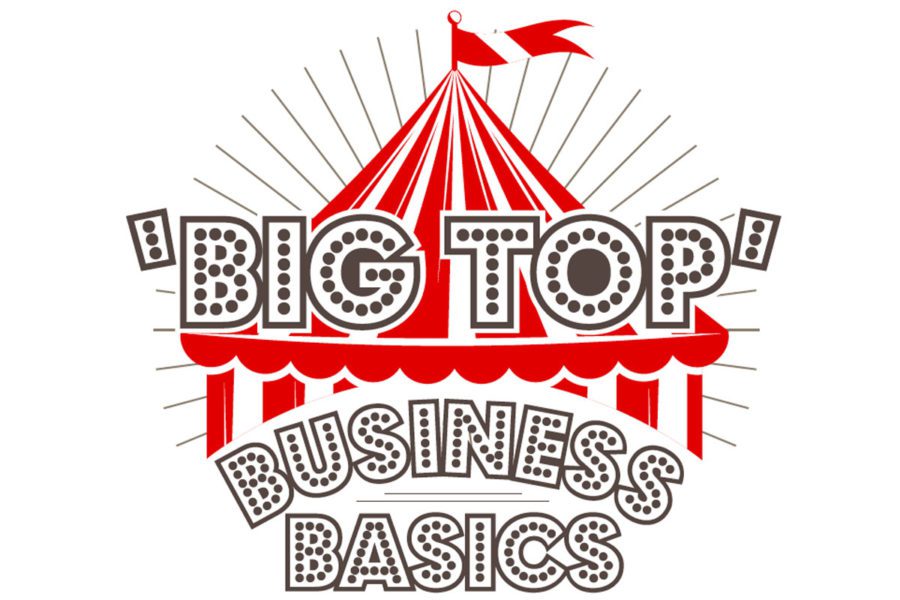
As the diving season approaches, many dive centers ramp-up their staff to handle the influx of classes taught, retail sales, dive trips and dive travel excursions.
Unfortunately, hiring the right people can be a challenging process. In our dive industry non-competitive wages, seasonal hiring and professional certifications are factors that tend to restrict the hiring process, leaving many dive center managers in a position of scrambling just to get numbers on staff. However, when hiring is reduced to the right number instead of the right people, a business culture can suffer. One bad employee can injure your brand by damaging both the relationships of other good employees and of good customers.
To counteract this problem, which can lead to lost profits and a diminished workplace culture, you will need to implement a structured hiring process. I call this management strategy “Hire Well” and it has tremendous returns on its implementation. Hire Well is a best-practice leadership philosophy that involves having a detailed hiring process to hire the right person for the job.
Many of us are honest, hard workers. You have climbed to management through performance. Or you have the grit and determination of entrepreneurship. But everyone is not built like you. When someone comes to us for a job, we THINK the person is ready to work and that they have honestly represented their skills and values. But that is not always the case and sometimes a bad hire happens.
THE COSTS OF TURNOVER
Staff turnover is the number of employees in a business who leave and are replaced over a given period. Turnover is expensive. The expenses are measured in dollars, time and morale. These expenses surge at the beginning and end of a person’s employment. Here are some examples of the costs associated with staff turnover:
Time Cost in Hiring. The process of filling a position has numerous direct costs, including posting help wanted ads in various media. But the time it takes management to perform all of the associated duties of hiring is by far the largest cost factor. Although hiring is an essential responsibility of a manager, when it is performed over and over again, it takes too much of a manager’s time. This can pull away focus from other essential management tasks.
Time Cost in Training. A large amount of time is spent by you and other staff members training new employees. From going over the employee manual, to shadowing, showing daily routines, demonstrating job functions: then evaluating their performance of those job functions, it all requires a tremendous investment of time and resources.
Morale. The rest of your seasoned and high-performing staff, even if it’s just you and one other person, can be burdened by a bad hire. A lack of performance by one employee affects other employee’s work and negativity enters the workplace. When employees have a poor attitude about coming to work, many things about their performance begin to unravel.
Customer Perception. When customers witness turnover they often wonder why. If they had a bad experience with the employee, they might feel “good riddance.” However, if they thought the employee was nice, good or okay, they then begin to question whether it was the employee or if the management drove the person away. This places doubt on your dive center’s brand.
Conflict Prior to Departure. The bad hire becomes apparent when other employees—or customers—report problems. In response you draft a disciplinary document and meet with the problematic employee. Each of these meetings is a time consuming process of conflict management. This process repeats itself until after the “final warning” when you are able to terminate the employee. But how much time did that take out of the business days for both you and your employees?
Shift of Focus Prior to Departure. Owners and managers in the business are the visionaries. These are the thinkers, the planners, the strategists and they inspire the staff to grow the business. However, when confronted with a bad hire among the ranks, their vision is taken a way from the big picture and the focus instead becomes a keen awareness of the actions and performance of the bad hire (a.k.a. micromanagement).
TO START, SPEND TIME HIRING
As mentioned earlier, to Hire Well involves having a detailed hiring process to hire the right people for the job. John Felkins with EntreLeadership.com says, “Spend four times the amount of time you would normally spend hiring someone. Whatever your hiring process is, multiply it by four and you’re almost spending enough time.”
This, however, is countercultural. The reason? Often you are the only one conducting the interview. If you spend copious amounts of time interviewing multiple people in a lengthy process, your productivity on other job functions has plummeted. So many managers acquiesce to the fastest and most efficient way to hire. Perhaps it looks like this: you post a position, get a resume or two, conduct one interview of between 20-30 minutes for those who have the “best” resume, then offer the job to the “best” of the lot. Sound familiar?
Have you ever followed this scenario? In my early days as a dive center manager, I would read the resume of a divemaster or instructor and I would hone in on where they were trained. “Oh, I see you were trained at XYZ Dive Center for your instructor training—you’ll be great!” Except not so fast. Focusing only on the reputation of their instructor or dive center, or the individual’s technical skills means you might fall short of securing an overall good employee for your business. You see, in many cases we spend more waking hours with our staff at work than we do our own families at home: so you might consider your staff a second family.
The moral of the story is, if you don’t spend time to get the right hire, you are going to be: wasting time training the bad hire; then more time counseling the bad hire; then time counseling the other staff about the bad hire; then spend time correctly firing the bad hire; then even more time hiring the next hire! That is far more wasted time and energy, frustration, damaged morale and loss of productivity, than if you had spent longer on the hiring process in the first place. Fortunately, there are a few steps you can employ to help you employ the right person for the job.
HOLISTIC HIRING
One critical mistake in the hiring process is hiring for specific job functions versus hiring for the culture. If you set out to hire an equipment repair technician, but that person does not fit with your workplace culture then you will have to deal with the negative costs of a bad hire. Whereas, if you were to focus on what you are looking for in an employee—in a holistic, workplace culture sense—then you will have a better chance at long-term employment, happier customers and positive workplace morale.
So what is the culture at your dive center? Is it a culture of safety, of training, of fun? You need to identify what your “differentiator” is. What is it that makes your business environment different from that of a competitor? Paul Leone is the president of the Breakers Hotel in Palm Beach. This legendary hotel has some of the highest employee satisfaction rates of any business in the United States. Paul uses extreme care in hiring new employees, and his team looks for people who will fit into their culture’s key differentiator. In a Wall Street Journal Live interview, Paul states, “The person for us in this business, in our culture, needs to be a person with a tremendous amount of energy, a positive attitude, a team spirit, a team player. He or she obviously needs to have a lot of ability and intelligence. But maybe more important than any of those, we’re trying to figure out if these are really kind and caring people. Because at the end of the day our culture, internally and as it relates to our customers, is all about care and friendliness. That’s the key differentiator for us.”
CREATING A HIRING HANDBOOK
At the heart and soul of Hire Well is the hiring process itself. Using John Felkin’s sage advice of spending four times the amount of time you would use normally to hire someone, your process will need to expand. And even though we are spending more time on hiring, we will be more efficient, effective and successful with a solid process. One of the best ways to do this is to create a hiring handbook that will help you effectively evaluate prospects. This details the process in a logical order. Here are some suggested items to have in your hiring handbook:
Narrative. Request the person applying to write a two-page narrative. On page one they answer, “Why do you want to work for our company?” On page two they answer, “What value would you bring to our company?” or “What value would be added to our company by hiring you?” This one step will differentiate the quality of the employee right from the start. You will see those who can’t come up with enough to say, so they make huge line spacing and wide margins. Interpretation: Lazy and poor communicators. You will see some that don’t even answer the questions. Interpretation: Doesn’t follow instructions well. Then there will be those who nail it with good, articulate examples and rationale. This step is powerful.
Have a Detailed Job Description. Give the prospective employee a detailed job description prior to their interview. The details need to include every single area of both “Job Duties” and “Performance Expectations.” Job duties need to be specific. For instance, if a duty in the job description says “cleaning bathrooms” then you open the door for the lazy employee to say “I cleaned the bathrooms once already this week.” Instead, specify in the job description “clean bathrooms two times per day, morning and afternoon, and at other times when needed.” For Performance Expectations in a job description don’t just say “keep dive center floor clean.” Instead be specific as to what you actually expect, such as “when you walk by even the smallest piece of trash on the floor, you will pick it up.” This sets an indisputable workplace standard that the employee is agreeing to by continuing in the hiring process. This is why the job description goes to the prospective employee prior to their interview. Then, when conducting the interview, you can ask, “do you think you can meet all of the Job Duties and Performance Expectations required at our dive center?”
Interview. When interviewing candidates, first ask them to elaborate on their narratives. This should break the ice as they are already prepared for elements of the questions. By elaborating, they are able to discuss more in depth about job history, diving experience, teaching experience, etc. Next, ask them scenario-based questions in different areas of their job function. For example:
Technical Knowledge
“When filling a scuba cylinder you notice the tank’s last hydrostatic date stamp is 04/11. What would you do?”
“What are the standards for the Open Water Diver course’s swim evaluation?”
“What are the pros and cons of a back mount-style buoyancy compensator (BC) versus a jacket-style BC?”
“A customer is concerned about his poor air consumption. Name three factors that could contribute to poor air consumption.”
Customer Service
“When filling a scuba cylinder you notice the tank’s last hydrostatic date stamp is 04/11. What would you tell the customer?”
“I am a prospective Open Water Diver student and I ask you ‘is there a swim test?’ What would you tell me?”
“You answer the phone at the dive shop and a person asks you ‘how much is your Open Water Diver class?’ What would you tell that person?”
These questions will often expose their areas of talent and weakness. You will actually watch the applicants think “on their feet” as they process your questions and answer them. Pay attention here to body language, too. Notice if it was easy for them to deliver the responses as if they have said them before, or are they conjuring up these responses for the first time.
Presentation. If you are hiring an instructor, have them give a lecture and even consider having them give a teaching demonstration of a confined water session. If you are hiring a divemaster, have them give a dive briefing: ask for the dive briefing they gave at their previous job (they should know it by heart). If it is a managerial position for which you are hiring, have them give a presentation on strategies of selling beginner dive classes or the importance of the sales triangle of travel, training and equipment in a dive center. Create an evaluation form on which you’ll record notes about their presentation.
Panel Interview. As you narrow potential new hires down to the top few, have each candidate meet with multiple staff members—but without any management in the room. In this discussion session encourage your employees to ask questions. You can give them sample questions and definitely let these employees know what questions they are not allowed to ask by law (e.g. age, medical problems, etc.) A simple Google search of “what employers can’t ask in an interview” will give you guidelines. During this same panel interview, the candidate is encouraged to ask your staff questions. Your staff will learn a lot about the candidate from the questions he asks. Create a Candidate Rating Form for the panel interview as well.
Have a Meal. Many good things in life happen around meals, and getting to know someone over a breakfast, lunch or dinner is a special opportunity. When you have narrowed down your search to a few key people, take them out for a meal. Invite key staff—staff that has your company values at heart. When you have a meal with a prospective employee everyone is more at ease. There is comfort in eating. It will also be on neutral ground. This more relaxed atmosphere allows their social skills and body language to show. You may even notice the interviewee’s guard comes down and they will volunteer more personal information. Is this an added expense to hiring? Sure it is. But remember, you are about to bring on a new “family” member.
Check References. Although we intuitively know the value of checking references, let’s face it, it’s just not easy. You play a constant back and forth of phone tag with the previous employer. You wonder what questions you should ask, or even what questions should you ask that will not get you in trouble. One of the greatest resources for handling this is SkillSurvey’s Pre-Hire 360. This online reference-checking platform allows the employer to create a digital hiring survey that is emailed to prior managers and supervisors of the employee you are considering. The prospective employee actually signs a waiver (to protect you), and the prior managers and supervisors are told their answers are completely confidential. This gives them the freedom to be accurate and open in their survey. You can even do a score comparison with all the candidates. This is an extremely efficient and effective tool for reference checking.
Check Social Media. If you think this sounds creepy, think again. Facebook, Twitter, Instagram and LinkedIn accounts provide a glimpse of a prospective employee that is not often expressed in an interview. You can learn much about a person by viewing their profile and/or their posts. Most people are quite buttoned-up on LinkedIn due to its more business-networking format, yet on Facebook and Instagram they tend to reveal more of their personality, likes and dislikes. This will serve you well as you look towards getting the right person hired to fit your dive center’s culture.
HELP FOR HELP WANTEDS
Now that you have identified your culture and differentiator, and you have crafted your hiring handbook, let’s look at where and how you should announce that you’re hiring. There are many avenues for posting jobs online: some are paid and some are free. Some dive training agencies have job boards to post your position vacancies. This is a great way to get an instructor with agency credentials that match your dive center. Other online diving resource websites such as ScubaBoard.com and DeeperBlue.com have a help wanted and jobs offered section respectively. Personally, one place I do not recommend posting job openings is Craigslist. I once posted on several online sites looking for lifeguards. Without fail every person who responded from Craigslist was truly questionable. When I researched this further it was clear that many business owners have had similar low-caliber prospects come from Craigslist posts.
The wording of your help wanted ads is also important. Sell people on your job by selling them on your culture. Make sure you include words that reflect the culture you expect at your dive center. For instance, if you want to sell that working for you is fun, that is exactly what you’ll get—employees who are looking for fun. However, if including phrases like “seasoned divemaster”, “talented instructor”, “customer-oriented manager”, “student-centered instructor trainer,” will likely yield a different and better crop of respondents.
Remember, to Hire Well is one of the most important things you can do for your business. Having the right people on your team is the foundation of successful businesses. These people are your second family, so Hire Well for a great workplace culture.





